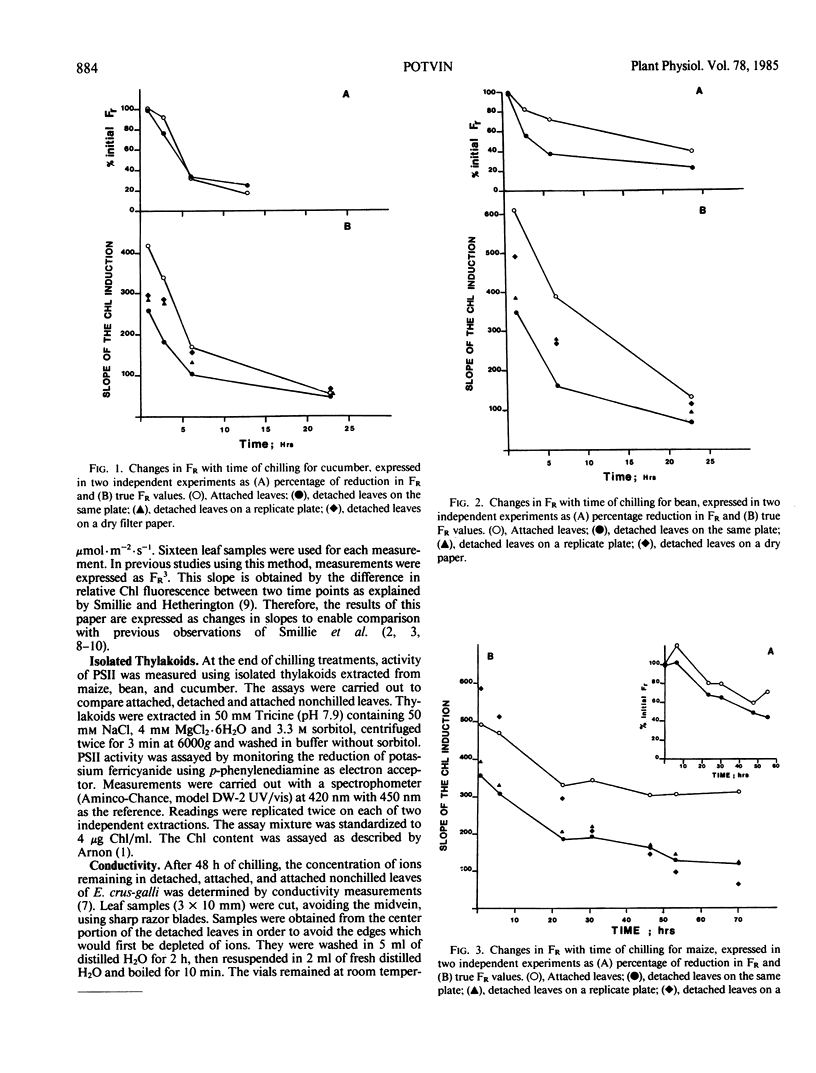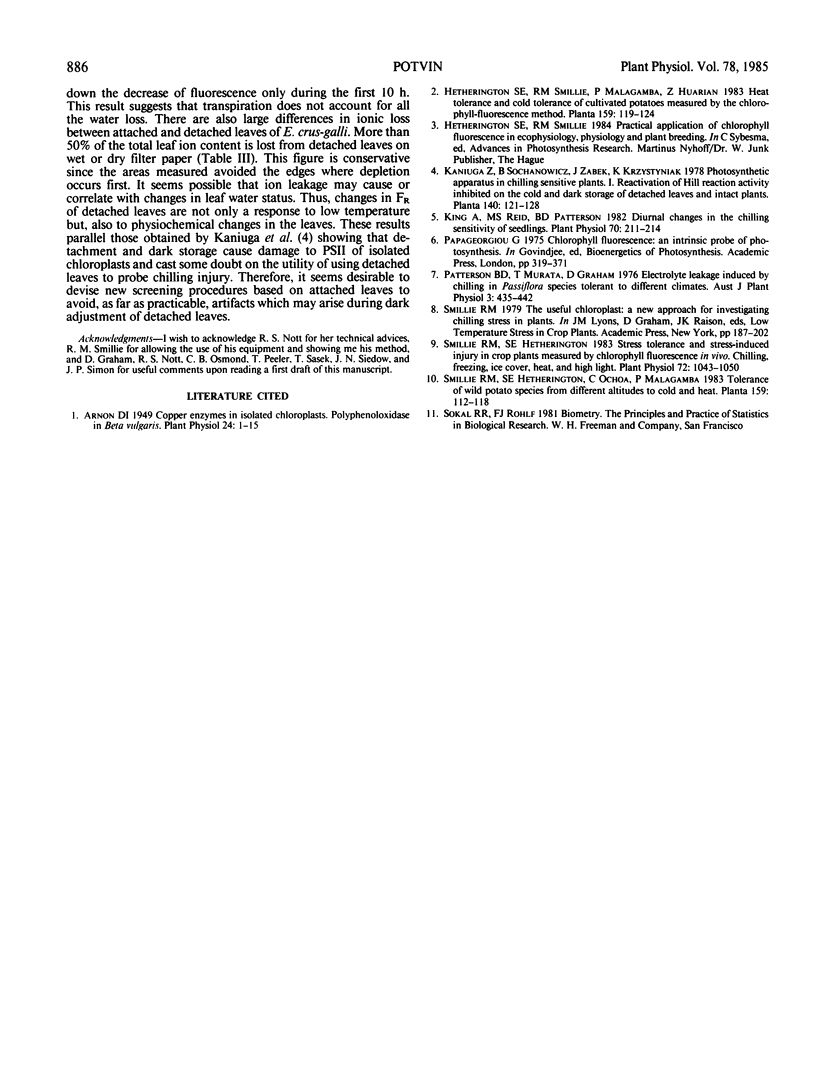Abstract
The effect of leaf detachment on chlorophyll fluorescence was analyzed for Zea mays, Cucumis sativus, Phaseolus vulgaris, and Echinochloa crus-galli. Results clearly indicate that detachment hastens the decrease in chlorophyll fluorescence during the course of chilling experiments. For maize and bean, the activity of photosystem II of chloroplasts isolated from detached leaves is lower than that of chloroplasts isolated from attached leaves. There are also large differences in ionic loss between detached and attached leaves of barnyard grass which could correlate with changes in leaf water status. The detached leaves lost some 50% of their total ionic content. Finally, detachment alters the ranking of the species with regard to their chilling tolerance.
Full text
PDF



Selected References
These references are in PubMed. This may not be the complete list of references from this article.
- Arnon D. I. COPPER ENZYMES IN ISOLATED CHLOROPLASTS. POLYPHENOLOXIDASE IN BETA VULGARIS. Plant Physiol. 1949 Jan;24(1):1–15. doi: 10.1104/pp.24.1.1. [DOI] [PMC free article] [PubMed] [Google Scholar]
- King A. I., Reid M. S., Patterson B. D. Diurnal changes in the chilling sensitivity of seedlings. Plant Physiol. 1982 Jul;70(1):211–214. doi: 10.1104/pp.70.1.211. [DOI] [PMC free article] [PubMed] [Google Scholar]
- Smillie R. M., Hetherington S. E. Stress tolerance and stress-induced injury in crop plants measured by chlorophyll fluorescence in vivo: chilling, freezing, ice cover, heat, and high light. Plant Physiol. 1983 Aug;72(4):1043–1050. doi: 10.1104/pp.72.4.1043. [DOI] [PMC free article] [PubMed] [Google Scholar]


